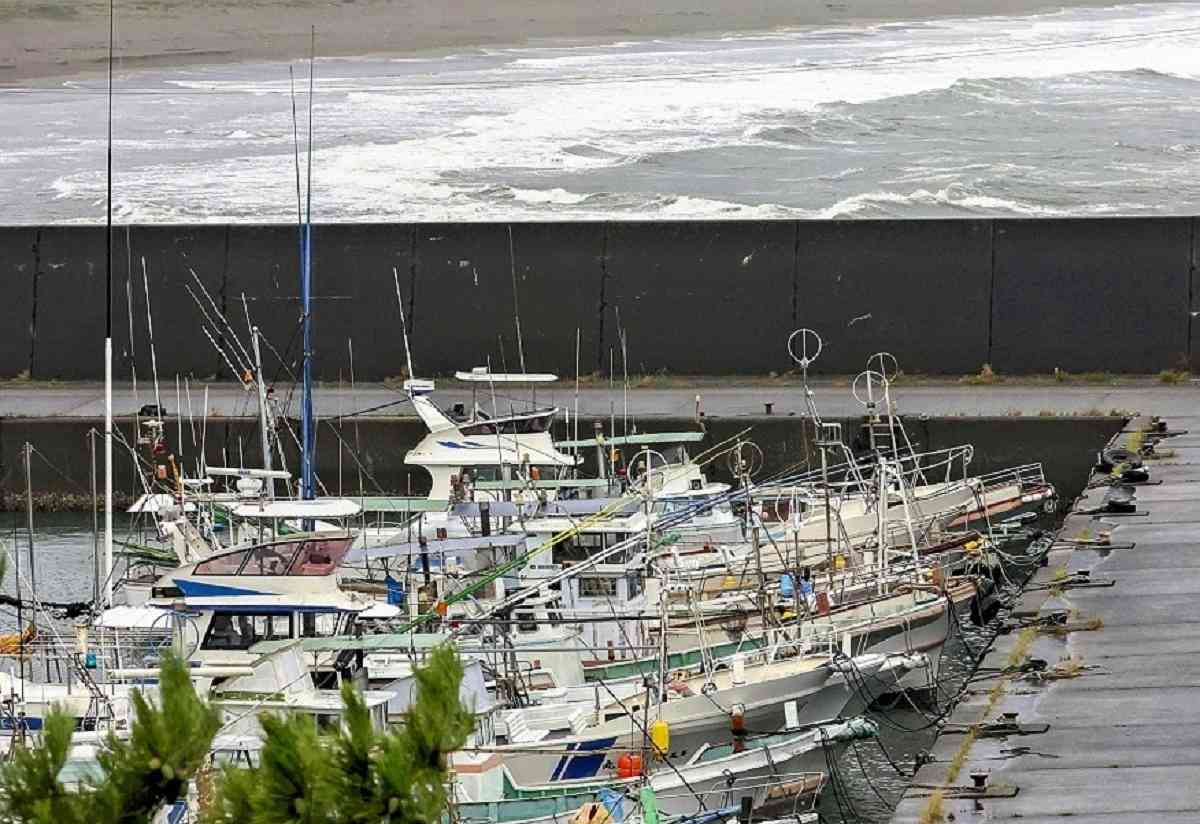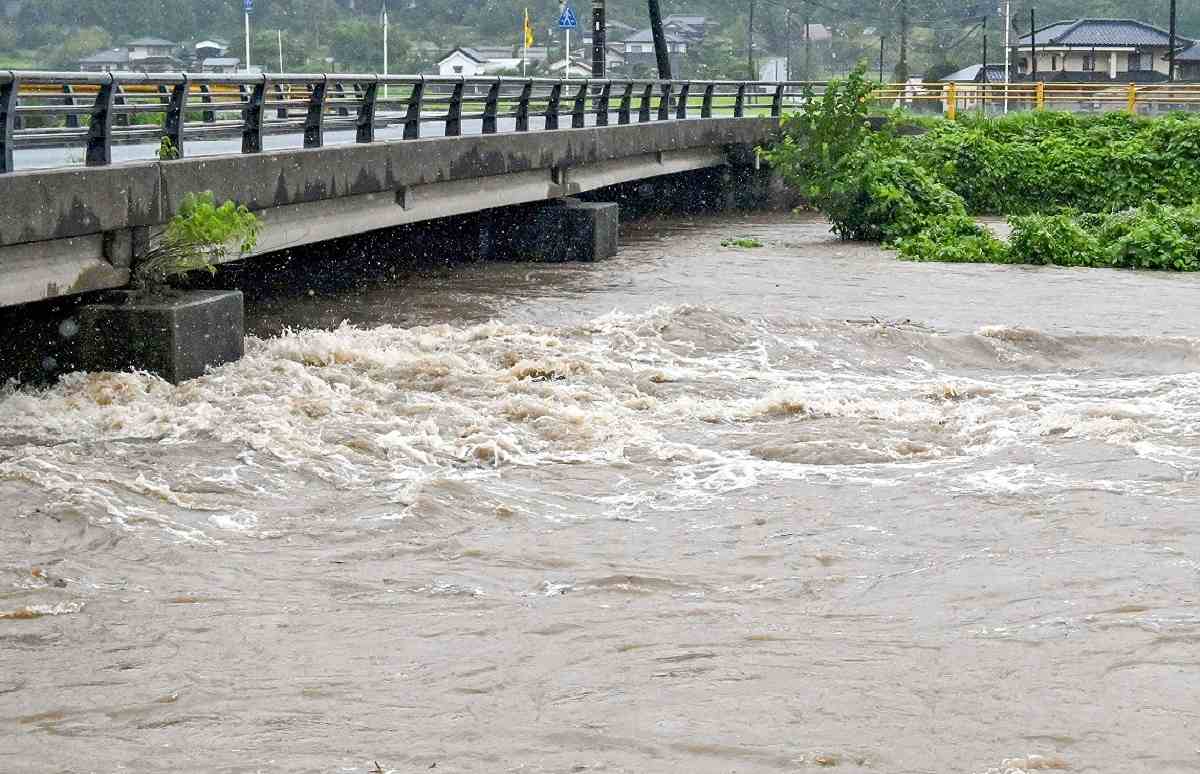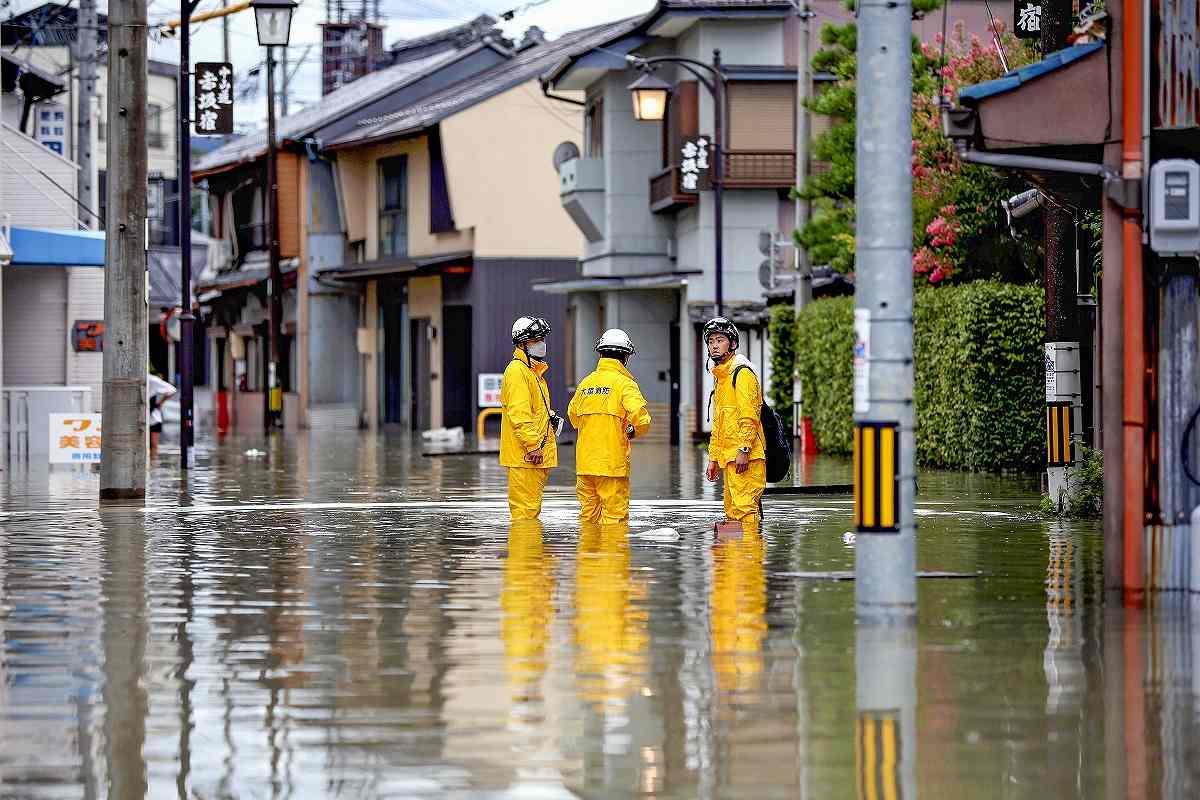News in Pictures / Slow-Moving Typhoon Shanshan Wreaks Havoc Across Wide Swath of Japan

Exhausted travelers are seen at a domestic departures lobby of Kansai International Airport in Osaka Prefecture on Saturday as flights were canceled.
15:29 JST, September 3, 2024

A house destroyed by a mudslide is seen in Gamagori, Aichi Prefecture, on Wednesday.
Typhoon Shanshan turned into a tropical cyclone on Sunday off the Pacific coast of the Tokai region and disappeared by early Monday, according to the Japan Meteorological Agency. Originating near the Mariana Islands in the Pacific Ocean on Aug. 22, the typhoon moved slowly, causing heavy rain in various parts of Japan that disrupted transportation and triggered mudslides.
Seven deaths had been confirmed, one person was missing and 129 people had been injured as of 6 p.m. Sunday, according to The Yomiuri Shimbun’s tally.
Also referred to as Typhoon No. 10, the storm moved in a complex pattern. After landing on Kagoshima Prefecture on Thursday, it moved slowly from Kyushu to Shikoku. It spurred heavy rain in Kyushu, and in locations not directly hit by the typhoon in the Kanto and Tokai regions.


Left: High waves surge into a fishing port in Kochi on Thursday. Right: Fishing boats are moored in a fishing port in Kuroshio, Kochi Prefecture, in preparation for the approaching typhoon on Thursday.
Sea surface temperatures south of Japan, where the typhoon advanced, are said to have been as hot as those in the tropics this summer. As a result, a large amount of water vapor supplied by the ocean developed the typhoon to nearly the strongest level.
Precipitation from Aug. 27, when the typhoon approached Japan, through 11 a.m. on Sunday reached 942 millimeters in Izu, Shizuoka Prefecture, which is 2.3 times the normal amount of precipitation for the whole of August, according to the Japan Meteorological Agency. There were 911 millimeters of precipitation in Ebino, Miyazaki Prefecture, over the same period.
-

The Yomiuri Shimbun
A building apparently damaged by wind gusts is seen in Miyazaki on Thursday. -

The Yomiuri Shimbun
The Niho River in Yamaguchi is seen swollen by heavy rain on Friday. -

The Yomiuri Shimbun
A residential area is seen flooded by heavy rain in Ogaki, Gifu Prefecture, on Saturday. -

The Yomiuri Shimbun
A resident stands in a residential area damaged by wind gusts in Miyazaki on Friday.
Related Tags
"Society" POPULAR ARTICLE
-

M4.9 Earthquake Hits Tokyo, Neighboring Prefectures
-

Israeli Tourists Refused Accommodation at Hotel in Japan’s Nagano Pref., Prompting Protest by Israeli Embassy and Probe by Prefecture
-

M7.5 Earthquake Hits Northern Japan; Tsunami Waves Observed in Hokkaido, Aomori and Iwate Prefectures
-

Tsukiji Market Urges Tourists to Avoid Visiting in Year-End
-

High School in Kyoto Says Students Shoplifted during Recent School Trip to Bali, Indonesia
JN ACCESS RANKING
-

Tokyo Economic Security Forum to Hold Inaugural Meeting Amid Tense Global Environment
-

Keidanren Chairman Yoshinobu Tsutsui Visits Kashiwazaki-Kariwa Nuclear Power Plant; Inspects New Emergency Safety System
-

Imports of Rare Earths from China Facing Delays, May Be Caused by Deterioration of Japan-China Relations
-

University of Tokyo Professor Discusses Japanese Economic Security in Interview Ahead of Forum
-

Japan Pulls out of Vietnam Nuclear Project, Complicating Hanoi’s Power Plans

























